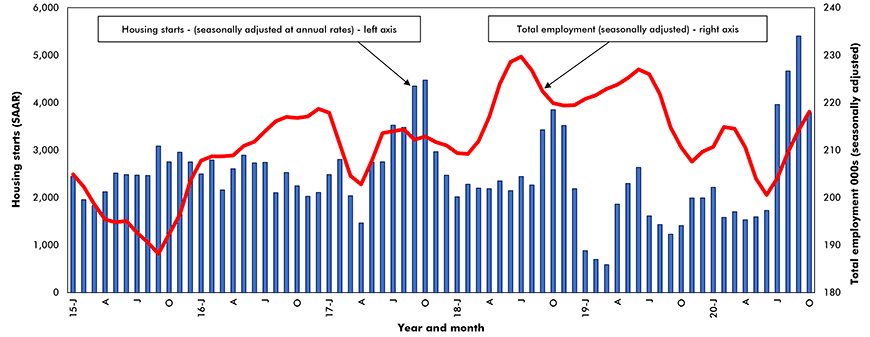New truck plant restores Oshawa’s mojo
With the spectre of a provincial lockdown hanging over all our heads, good news is a scarce commodity these days. On Nov. 5, however, General Motors provided a healthy dose of it for Oshawa.
After announcing that it planned to mothball its Oshawa assembly plant and lay off the 3,000 workers employed there at the end of 2019, GM offered a partial reprieve to Canada’s oldest auto plant in May of 2019. Instead of shutting it down completely, GM indicated it would convert the facility for stamping, subassembly and vehicle testing. The company projected that these activities would employ 700 workers, better than a total shutdown, but well shy of the 3,000 who worked there previously.
The company’s Nov. 5 announcement, however, was significantly more uplifting. In early 2022, GM plans to restart production at its Oshawa facility with the help of a $1.3 billion investment. Construction is going to start immediately to build a new body shop and flexible assembly module to produce a new family of light and heavy-duty pickup trucks. This new facility is scheduled to directly employ over 1,700 hourly workers, plus supervisory and support staff. Firms supplying goods and services to the new facility will also hire more staff.
More help-wanted signs likely after a COVID-19 pause
Oshawa, like every other census metro area in Canada, has been hit hard by the lockdowns to limit the spread of COVID-19. However, unlike most metro areas in the country, its economy has recovered much faster. The extent of this recovery is reflected by the fact that over the past four months (July-October), employment in Oshawa has increased by +24,200 positions. This gain more than offsets the 22,000 jobs the city lost between February and May as a result of the COVID-19-driven lockdown.
In October, employment in Oshawa was up by +3.4% y/y, the second-fastest gain among the country’s thirty-three census metro areas. Industries that added the most employees since June were wholesale trade (+8,700), construction (+5,700), financial services (+4,100) and business services (+3,800).
Housing fundamentals are positive
Although the impact of COVID-19 caused home sales in Oshawa to drop by -67% y/y in April and -51% y/y in May, they have subsequently accelerated sharply. In the five months June through October, home sales are up by +50% versus the same period a year earlier. Driven by this strong demand, the median price of homes sold in the region is up by +20%, significantly higher than the +13.7% gain in median house prices in the city of Toronto.
Factors contributing to the surge in home sales include record-low mortgage interest rates, the above-mentioned resurgence in hiring, the fact that homes in the Durham region are more affordable than in Toronto, plus ex-urban migration fuelled by condo owners wanting to start families in more child-friendly neighbourhoods. In response to this surge in demand, housing starts over the past five months in the Oshawa census metro area are up by +132% compared to the same period in 2019.
Looking forward, the positive employment outlook, persisting low-interest rates, the significant increase in household savings (highlighted in a recent CIBC report), sustained ex-urban migration and a post-COVID-19 rebound in international net in-migration should underpin housing demand in 2021 and 2022. This prospect is reinforced by the recent strength in building approvals, which in the past five months are +102% vs the same period in 2019.
Non-res construction will get a solid boost from GM plant expansion
Despite the COVID-19-driven partial lockdown, which idled close to 5,000 construction workers in the first half of this year, the volume of investment in non-residential building construction in the Oshawa census metro area is up by +13% year to date compared to 2019. By far, the major contributor to this gain was a +109% jump in the construction of warehouses, together with a solid +49% year-over-year gain in the construction of schools.
While the recent escalation of COVID-19 cases in Oshawa casts a pall of uncertainty over the near-term outlook for non-residential construction, the combination of a soon-to-be-available very effective COVID vaccine and the above-noted $1.3 billion investment to revitalize the GM assembly plant significantly brighten the outlook for non-residential construction in 2021 and beyond.
Spending on the new GM Plant will augment the ongoing Darlington Refurbishment Project. Other projects on the drawing board include the extension of GO service by Metrolinx, the second phase of the residential development at 135 Bruce Street and the Ontario Street residential development.
John Clinkard has over 35 years’ experience as an economist in international, national and regional research and analysis with leading financial institutions and media outlets in Canada.
Oshawa employment vs housing starts

Data Srouce: Statistics Canada, CMHC
Chart: ConstructConnect — CanaData.









Recent Comments
comments for this post are closed